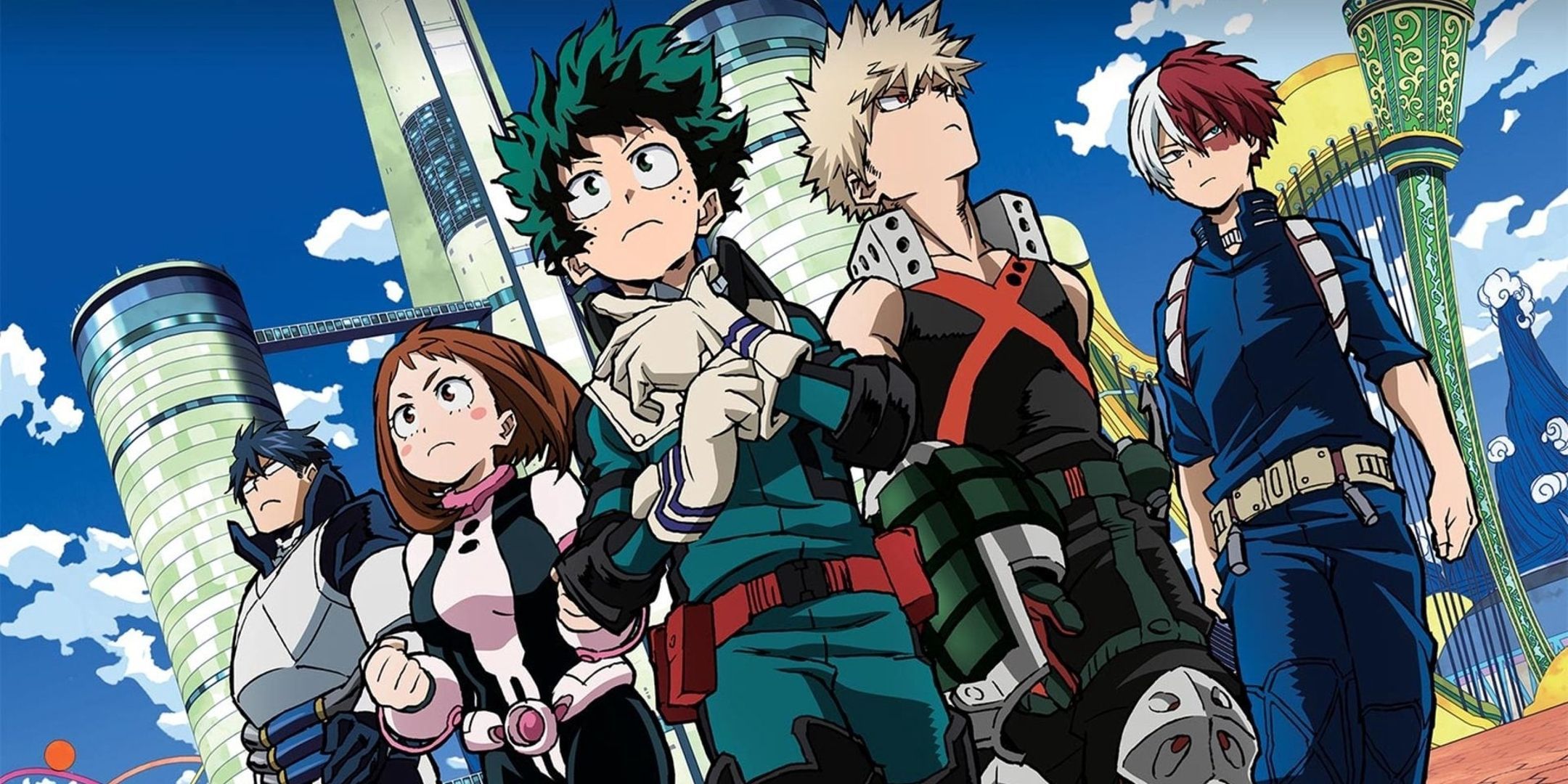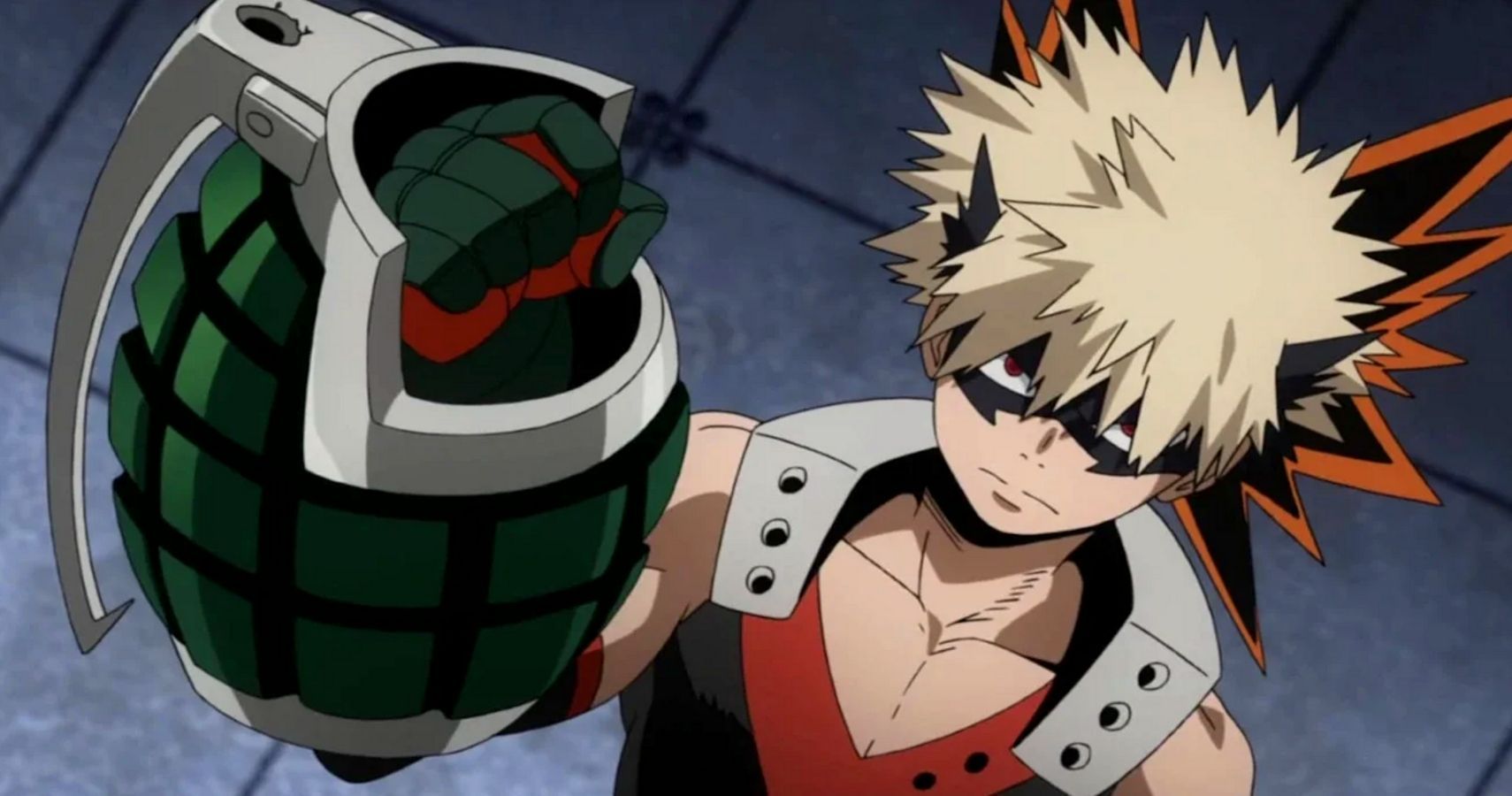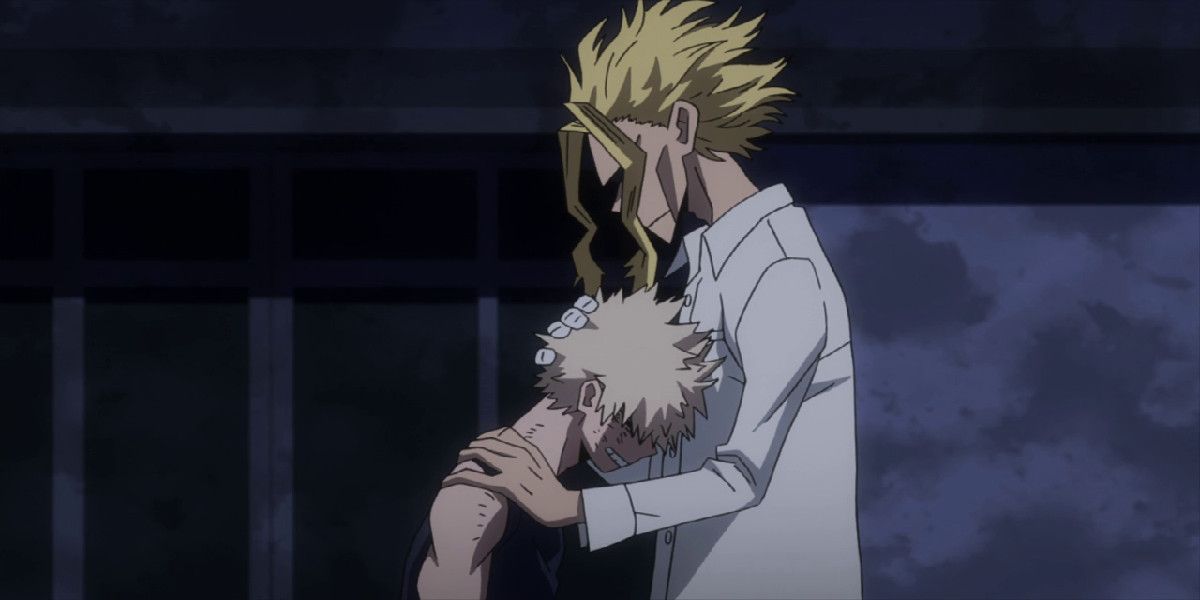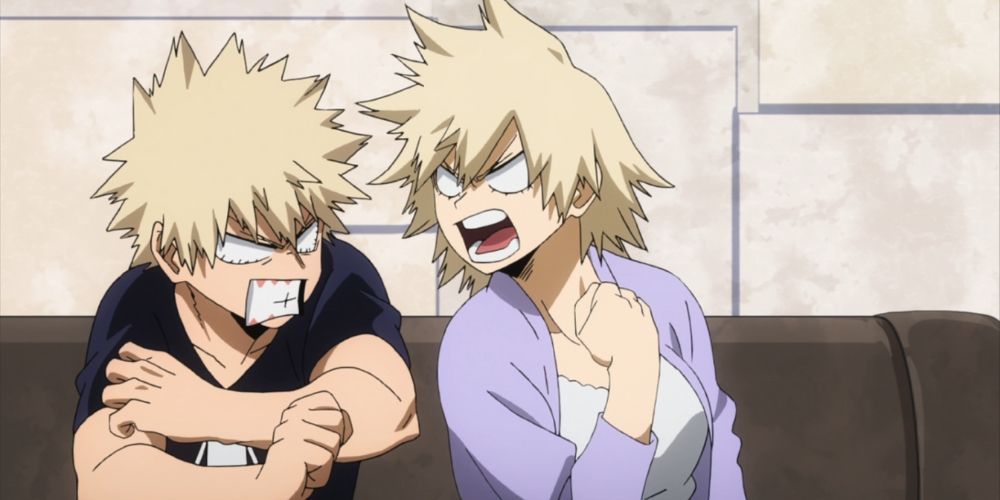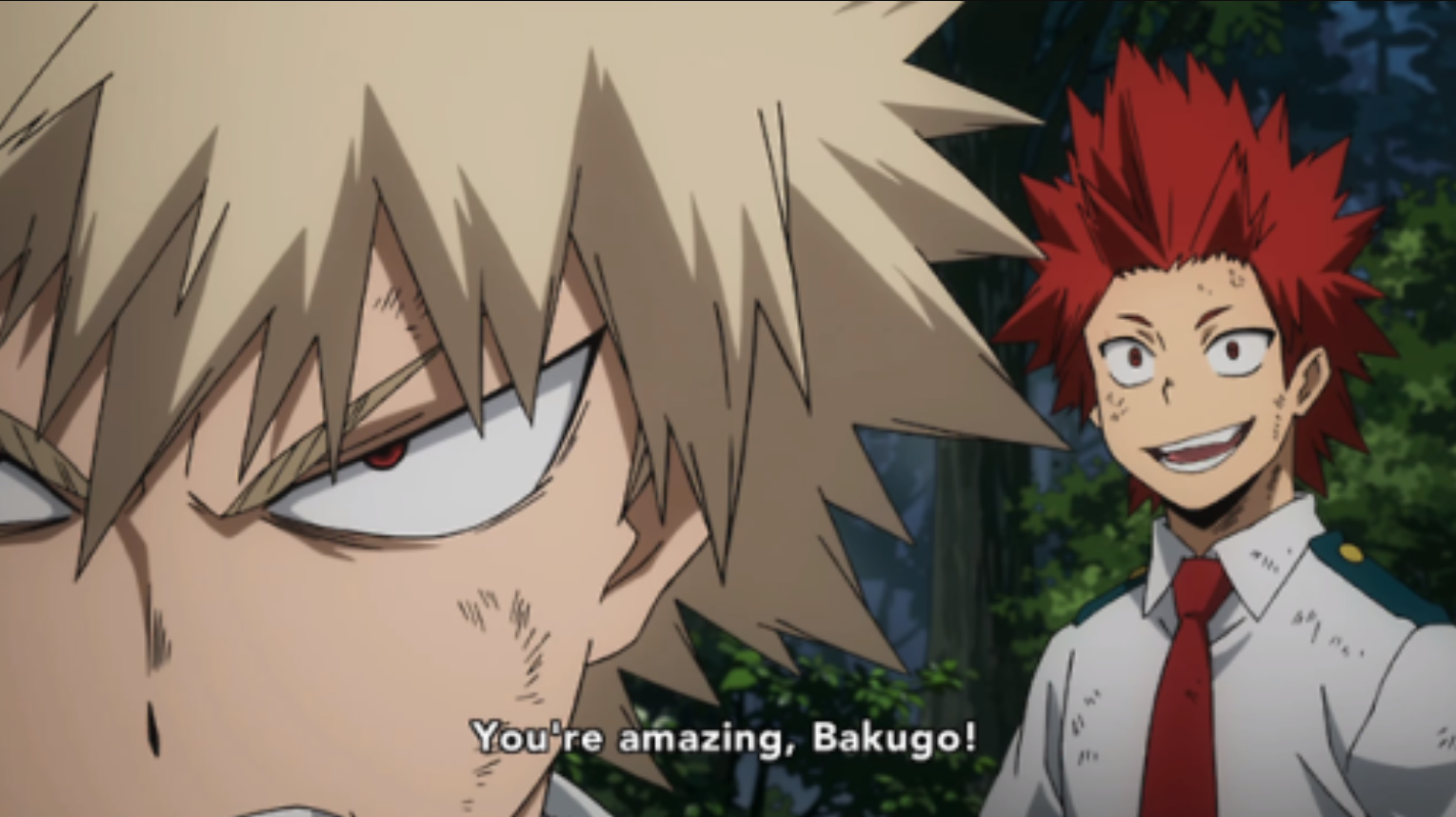Every year or so, Shonen Jump conducts a popularity poll in both in America and Japan for My Hero Academia. This is common practice for manga and anime that have been ongoing for some time that, as their name suggests, reveals just how popular the various characters and manga that appear in the weekly Jump magazine really are. What's fascinating about polls like this is the way that Eastern and Western opinions on the exact same characters might contrast. For example, Mirio Togata is way more popular in the West than the East, since Togata ranked 25th in Japan and 10th in America in the same year's polls.
However, when looking at the number one slot, cultural differences don't really matter this year. Both the East and West firmly agree that Katsuki Bakugo, the yellow-haired explosive rival to Midoriya with a hot-headed temper, is the most popular character. And it's not just the popularity polls, either. Last year, Tumblr measured that the most discussed My Hero Academia ship was Bakugo and Kirishima, but the blogging site also stated that three of the six ships involving My Hero Academia featured Bakugo. Now, we're going to take a closer look at just why Bakugo is so popular all over the world.
The Rival Popularity Syndrome
Anyone who has any long-term grasp of shonen manga fandom, however, shouldn't really be surprised by these statistics. After all, the rival character tends to be one of the most popular characters in every fandom by every metric. When Dragon Ball Z ran its popularity polls during the manga's lifetime, Vegeta consistently ranked super high. Yu Yu Hakusho's popularity polls similarly placed its rival character, Hiei, at the top in every character poll and placed two of his fights on the battle popularity poll. Naruto popularity polls placed Sasuke consistently floating along the top four places on its ranking, sometimes first, but often third or fourth.
That's not to say all rivals are inherently the best character. After all, Gary from Pokemon isn't exactly as beloved as Ash. Furthermore, with the increased number of polls, the rival characters rarely held onto their top spot as consistently as Bakugo has. This begs the second question: what can we learn about the one time Bakugo didn't top the popularity polls?
The Only Time Bakugo Failed
While Bakugo has retained the top spot in almost every popularity poll, in both the East and the West, he failed to top the polls just once, and, by examining when he advanced in the polls, we can understand why he has retained his popularity for so long.
In the first popularity poll, Bakugo ranked third in Japan (behind, in descending order, Midoriya and Todoroki) and fifth in America (behind, in descending order, Midoriya, Asui, Uraraka, and All Might). Both polls started in 2015, with the Japanese poll being conducted alongside the release of Chapter 52 of the manga, before the anime began airing.
Chapter 52 is in the middle of the Stain fight, which means the manga just passed the Sports Festival tournament arc, where Midoriya and Todoroki had their epic showdown. Obviously, people felt the most drawn to these two and less drawn to Bakugo. At this point in America, the manga was being released, but My Hero Academia simply wasn't as hugely popular as it would become once the anime debuted in 2016. This means the people who voted in that first poll were exclusively die-hard manga fans.
At this point, Bakugo feels far more one-note, with him being aggressive and angry all the time. He also had far less time to take up the spotlight, with most of his big moments featuring his explosive personality pushing everyone to their limits or him just being powerful. His most emotionally nuanced moment at this point came from his fight with Uraraka, where he was forced to acknowledge Uraraka's strength when she almost beat him, despite her comparatively weak quirk.
BAKUGO GETS POPULAR
The second popularity poll, however, was conducted after the Bakugo Retrieval Arc and during the Provisional Hero License Exam Arc, where Bakugo saw a great deal of growth and character development. It's here that we really understand the key to Bakugo's consistent place in the popularity polls: nuance and growth.
Like many rivals, Bakugo does evolve as a character. He grows, changes and has revelations about himself that alters the relationships around him. For a while, we didn't really understand why Bakugo even wanted to be a hero. The case against him being a hero in the early arcs is so compelling that the League of Villains genuinely believes they can turn Bakugo into a villain. Granted, they have no idea how unyielding Bakugo is, but the idea remains that, to the public, Bakugo almost looks like a monster.
But once you see his family life, it's not hard to love Bakugo, especially after seeing him with his mom, from whom he clearly inherited his hot-head. Once he gets over talking about killing Bakugo, you start to see the foundations of his personality and world-view come to the forefront.
It's perhaps because of this his development is so noticeable. He fills that perfect niche of character: the person who is at once aggressive and violent before revealing his sweet side.
Bakugo is a Tsundere
Tsundere is the term for a popular stock character that either means a character who switches between sweet and rude personality traits or a person who starts off rude but gradually becomes sweeter. While the stock character is primarily female (Asuka Langley Sohryu from Neon Genesis Evangelion is a terrific example of one,) there are male examples like Dragon Ball's Vegeta or Fruits Basket's Kyo Sohma.
Kyo is undeniably one of if not the most popular Fruits Basket characters, for the exact same reasons Bakugo is popular. Both start out as aggressive hot-heads obsessed with beating another character in a fight. However, as time passes, their deeper layers as characters are revealed, resulting in both the other characters and audiences becoming endeared to the character.
In many respects, looking at Kyo puts Bakugo's popularity into perspective far more than comparing Bakugo to Vegeta. Unlike Vegeta, Bakugo's core wants don't change, but, like Kyo, he changes the ways that he expresses those wants. Both want something and see different ways they can get to that something. But as the way they view the world changes and they're both confronted with challenges, they grow more nuanced as characters.
While part of Bakugo's popularity is due to the fact that he's a rival in a shonen anime, he also demonstrates a great deal of growth in a fairly short period of time and is often confronted with challenges he can't easily shrug off. For fans of the current season of My Hero Academia disappointed by the lack of Bakugo in the Overhaul Arc, there's no reason to worry, since it seems like he's going to have a LOT of quality moments to come.

